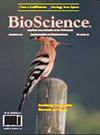牙组织亚结构和大小对二硅酸锂和氧化锆陶瓷断裂强度的影响
IF 0.5
4区 农林科学
引用次数: 0
摘要
我们旨在评估五种不同厚度咬合面的标准树脂制备模型对氧化锆(ZrO2)和二硅酸锂玻璃陶瓷断裂强度的影响。选取了在 2019 年 1 月至 2020 年 1 月期间采集的 10 颗上颌第一磨牙的标本。使用软件扫描树脂基质后形成标准数学模型。建立了五种不同咬合面厚度的全冠,其中单独使用 ZrO2 玻璃陶瓷复合材料制备的磨牙标本被分配到 ZrO2 组(n=5,40 个标本),而使用 ZrO2-二硅酸锂玻璃陶瓷复合材料制备的磨牙标本被分配到 ZTCLDC 组(n=5,40 个标本)。当玻璃陶瓷全冠的厚度分别为 0.5、0.8、1.0、1.2 和 1.5 mm 时,ZTCLDC 组试样的断裂载荷与 ZrO2 组试样的断裂载荷无显著差异,ZTCLDC 组与 ZrO2 组试样的三点抗弯强度也无显著差异(P>0.05)。在玻璃陶瓷全冠厚度为 0.5、0.8、1.0、1.2 和 1.5 mm 时,两组的断裂韧性无明显差异(P>0.05)。厚度与断裂载荷、三点抗折强度和断裂韧性呈正相关(P<0.05)。二硅酸锂和 ZrO2 陶瓷的断裂强度与 ZrO2 和 ZTCLDC 牙冠的厚度成正比。本文章由计算机程序翻译,如有差异,请以英文原文为准。
Effects of dental tissue substructure and size on fracture strengths of lithium disilicate and zirconia ceramics
We aimed to assess the effects of standard resin preparation models with five different thicknesses of occlusal surface on the fracture strengths of zirconia (ZrO2) and lithium disilicate glass ceramics. The specimens of 10 first maxillary molars collected between January 2019 and January 2020 were selected. Standard mathematical models were formed after scanning the resin matrices using software. The full crowns with five different thicknesses of occlusal surface were established, among which the molar specimens prepared by ZrO2 glass ceramic composites alone were assigned into ZrO2 group (n=5, 40 specimens) while those prepared using ZrO2-lithium disilicate glass ceramic composites were allocated into ZTCLDC group (n=5, 40 specimens). When the thickness of glass-ceramic full crowns was 0.5, 0.8, 1.0, 1.2 and 1.5 mm, the fracture load of the specimens in ZTCLDC group was not significantly different from that in ZrO2 group, and there was no significant difference in the three-point flexural strength between ZTCLDC group and ZrO2 group (P>0.05). The fracture toughness was not significantly different between the two groups in the case of the thickness of glass-ceramic full crown at 0.5, 0.8, 1.0, 1.2 and 1.5 mm (P>0.05). The thickness was positively correlated with fracture load, three-point flexural strength and fracture toughness (P<0.05). The fracture strength of lithium disilicate and ZrO2 ceramics is directly proportional to the thickness of ZrO2 and ZTCLDC crowns.
求助全文
通过发布文献求助,成功后即可免费获取论文全文。
去求助
来源期刊

Bioscience Journal
AGRICULTURE, MULTIDISCIPLINARY-AGRONOMY
CiteScore
1.10
自引率
0.00%
发文量
90
期刊介绍:
The Bioscience Journal is an interdisciplinary electronic journal that publishes scientific articles in the areas of Agricultural Sciences, Biological Sciences and Health Sciences. Its mission is to disseminate new knowledge while contributing to the development of science in the country and in the world. The journal is published in a continuous flow, in English. The opinions and concepts expressed in the published articles are the sole responsibility of their authors.
 求助内容:
求助内容: 应助结果提醒方式:
应助结果提醒方式:


